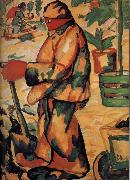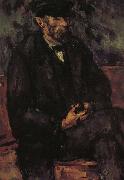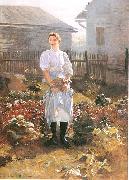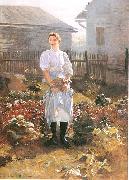Wholesale Oil Painting Reproductions No Minimum and Door to Door! |
|||||||||||
|
|
|||||||||||

|
|||||||||||
|
|
|
||||||||
All Kasimir Malevich Oil Paintings |
||||||||
|
|
||||||||
|
|
||||||||
|
Artist Introduction: 1878-1935
Kasimir Malevich Gallery
In 1904, after the death of his father, he moved to Moscow. He studied at the Moscow School of Painting, Sculpture and Architecture from 1904 to 1910 and in the studio of Fedor Rerberg in Moscow (1904?C1910). In 1911 he participated in the second exhibition of the group Soyuz Molodyozhi (Union of Youth) in St. Petersburg, together with Vladimir Tatlin and, in 1912, the group held its third exhibition, which included works by Aleksandra Ekster, Tatlin and others. In the same year he participated in an exhibition by the collective Donkey's Tail in Moscow. By that time his works were influenced by Natalia Goncharova and Mikhail Larionov, Russian avant-garde painters who were particularly interested in Russian folk art called lubok. In March 1913 a major exhibition of Aristarkh Lentulov's paintings opened in Moscow. The effect of this exhibition was comparable with that of Paul Cezanne in Paris in 1907, as all the main Russian avant-garde artists of the time (including Malevich) immediately absorbed the cubist principles and began using them in their works. Already in the same year the Cubo-Futurist opera Victory Over the Sun with Malevich's stage-set became a great success. In 1914 Malevich exhibited his works in the Salon des Independants in Paris together with Alexander Archipenko, Sonia Delaunay, Aleksandra Ekster and Vadim Meller, among others.
It remains one of the great mysteries of 20th century art, how, while leading a comfortable career, during which he just followed all the latest trends in art, in 1915 Malevich suddenly came up with the idea of Suprematism. The fact that Malevich throughout all his life was signing and re-signing his works using earlier dates makes this u-turn in his artistic career even more ambiguous. Be that as it may, in 1915 he published his manifesto From Cubism to Suprematism. In 1915-1916 he worked with other Suprematist artists in a peasant/artisan co-operative in Skoptsi and Verbovka village. In 1916-1917 he participated in exhibitions of the Jack of Diamonds group in Moscow together with Nathan Altman, David Burliuk and A. Ekster, among others. Famous examples of his Suprematist works include Black Square (1915) and White on White (1918).
In 1918 Malevich decorated a play Mystery Bouffe by Vladimir Mayakovskiy produced by Vsevolod Meyerhold.
Malevich also acknowledged that his fascination with aerial photography and aviation led him to abstractions inspired by or derived from aerial landscapes. Harvard doctoral candidate Julia Bekman Chadaga writes: ??In his later writings, Malevich defined the 'additional element' as the quality of any new visual environment bringing about a change in perception .... In a series of diagrams illustrating the ??environments' that influence various painterly styles, the Suprematist is associated with a series of aerial views rendering the familiar landscape into an abstraction..." (excerpted from Ms. Bekman Chadaga's paper delivered at Columbia University's 2000 symposium, "Art, Technology, and Modernity in Russia and Eastern Europe"). |
||||||||
|
|
||||||||
|
Gardener Painting ID:: 36227 |
mk110
1911
91x70cm
|
|||||||
Height Width |
INS/CM Quality |
|||||||
|
X |
| |||||||
|
|
||||||||
All Paul Cezanne Oil Paintings |
||||||||
|
|
||||||||
|
|
||||||||
|
Artist Introduction: French Post-Impressionist Painter, 1839-1906
During the second half of the 19th century French impressionism created a dramatic break with the art of the past. In conception and appearance the style was radically new and, although it initially inspired public ridicule, it soon affected nearly every ambitious artist in western Europe. The new vision emerged during the 1870s, chiefly in the art of Claude Monet, Auguste Renoir, and Camille Pissarro. For each of these artists impressionism was an illusionistic style which differed from the tradition of Renaissance illusionism in its greater emphasis upon vibrant, natural color and on an immediate confrontation with the phenomena of the visible world.
As the style developed during the 1880s, however, it increasingly became characterized by paintings which were flat rather than illusionistic. In other words, the impressionists insistence upon a direct application of pigment to canvas resulted in surfaces which declared themselves first of all as surfaces - and, consequently, in paintings which declared themselves first of all as paintings rather than as windows which looked out upon the natural world.
The tendency toward flatness persisted into the last years of the 19th century, its pervasiveness giving the impression that illusionistic space - fought for, won, and defended since the very beginning of the Renaissance - had finally been sacrificed by the medium of painting. Paul C??zanne worked within and finally emerged from this trend. As a painter, he matured slowly, his greatest works coming during the last 25 years of his life. During this period he scored a remarkable and heroic achievement: he restored to painting the space and volume that had seemingly been lost to it. But he did it in a totally unprecedented way: not by return to the illusionism of the past but by the creation of a spatial illusionism that did not violate flatness.
C??zanne was born on Jan. 19, 1839, in Aix-en-Provence. His father, Philippe Auguste, was the cofounder of a banking firm which prospered throughout the artist life, affording him financial security that was unavailable to most of his contemporaries and eventually resulting in a large inheritance. In 1852 C??zanne entered the Coll??ge Bourbon, where he met and became friends with Émile Zola. This friendship was decisive for both men: with youthful romanticism they envisioned successful careers in the Paris art world, C??zanne as a painter and Zola as a writer. Consequently, C??zanne began to study painting and drawing at the École des Beaux-Arts in Aix in 1856. His father opposed the pursuit of an artistic career, and in 1858 he persuaded C??zanne to enter law school at the University of Aix. Although C??zanne continued his law studies for several years, he was simultaneously enrolled in the School of Design in Aix, where he remained until 1861.
In 1861 C??zanne finally convinced his father to allow him to go to Paris. He planned to join Zola there and to enroll in the École des Beaux-Arts. But his application was rejected and, although he had gained inspiration from visits to the Louvre, particularly from the study of Diego Vel??zquez and Caravaggio, C??zanne experienced self-doubt and returned to Aix within the year. He entered his father banking house but continued to study at the School of Design.
The remainder of the decade was a period of flux and uncertainty for C??zanne. His attempt to work in his father business was abortive, and he returned to Paris in 1862 and stayed for a year and a half. During this period he met Monet and Pissarro and became acquainted with the revolutionary work of Gustave Courbet and Édouard Manet. C??zanne also admired the fiery romanticism of Eug??ne Delacroix paintings. But he was never entirely comfortable with Parisian life and periodically returned to Aix, where he could work in relative isolation. He retreated there, for instance, during the Franco-Prussian War (1870-1871). |
||||||||
|
|
||||||||
|
|
gardener Painting ID:: 61014 |
mk273 1902 Oil on canvas 107.4 x 74.5 cm |
||||||
Height Width |
INS/CM Quality |
|||||||
|
X |
| |||||||
|
|
||||||||
All Antoni Piotrowski Oil Paintings |
||||||||
|
|
||||||||
|
|
||||||||
|
Artist Introduction: (Bulgarian: Antoni Pyotrovski; 1853-1924) was a Polish Romanticist and Realist painter.
Piotrowski was born in Nietulisko Duże in 1853 near Kunew, then in the Russian Empire (today in Poland), to a sheet iron worker. From 1869 on, Piotrowski studied painting with professor Wojciech Gerson. From 1875 to 1877 he was tutored in Munich by Wilhelm Lindenschmit the Younger and from 1877 to 1879 his teacher was Jan Matejko of the Academy of Fine Arts in Krakew.
In 1879, Piotrowski arrived to the newly-liberated Principality of Bulgaria as a correspondent of the British issues The Graphic and The Illustrated London News and the French Illustration and Le Monde Illustre. He moved to Paris only to return to Bulgaria in 1885 to join the Serbo-Bulgarian War as a Bulgarian volunteer. For his merits during the fighting he was honoured with an Order of Bravery.
During his time in the Bulgarian Army Piotrowski painted the Battle of Slivnitsa, the storming of Tsaribrod and the Bulgarian entry in Pirot. All his nine military works were purchased by the Bulgarian state and are exhibited in the National Museum of Military History in Sofia. He also published graphics from the war in various Western European illustrated issues. Among his works were also portraits of Bulgarian princes (knyaze) Alexander of Battenberg and Ferdinand of Saxe-Coburg-Gotha; Piotrowski was awarded an Order of Civil Merit by the latter.
Piotrowski returned to Bulgaria in 1889: he visited Batak and painted his epic canvas The Batak Massacre. This painting of his won an award at the Plovdiv Fair in 1892. In 1900 Piotrowski returned to Poland and settled in Warsaw. |
||||||||
|
|
||||||||
|
|
Gardener Painting ID:: 82264 |
oil, canvas
Dimensions 85,3 x 62 cm
cjr |
||||||
Height Width |
INS/CM Quality |
|||||||
|
X |
| |||||||
|
|
||||||||
All Antoni Piotrowski Oil Paintings |
||||||||
|
|
||||||||
|
|
||||||||
|
Artist Introduction: (Bulgarian: Antoni Pyotrovski; 1853-1924) was a Polish Romanticist and Realist painter.
Piotrowski was born in Nietulisko Duże in 1853 near Kunew, then in the Russian Empire (today in Poland), to a sheet iron worker. From 1869 on, Piotrowski studied painting with professor Wojciech Gerson. From 1875 to 1877 he was tutored in Munich by Wilhelm Lindenschmit the Younger and from 1877 to 1879 his teacher was Jan Matejko of the Academy of Fine Arts in Krakew.
In 1879, Piotrowski arrived to the newly-liberated Principality of Bulgaria as a correspondent of the British issues The Graphic and The Illustrated London News and the French Illustration and Le Monde Illustre. He moved to Paris only to return to Bulgaria in 1885 to join the Serbo-Bulgarian War as a Bulgarian volunteer. For his merits during the fighting he was honoured with an Order of Bravery.
During his time in the Bulgarian Army Piotrowski painted the Battle of Slivnitsa, the storming of Tsaribrod and the Bulgarian entry in Pirot. All his nine military works were purchased by the Bulgarian state and are exhibited in the National Museum of Military History in Sofia. He also published graphics from the war in various Western European illustrated issues. Among his works were also portraits of Bulgarian princes (knyaze) Alexander of Battenberg and Ferdinand of Saxe-Coburg-Gotha; Piotrowski was awarded an Order of Civil Merit by the latter.
Piotrowski returned to Bulgaria in 1889: he visited Batak and painted his epic canvas The Batak Massacre. This painting of his won an award at the Plovdiv Fair in 1892. In 1900 Piotrowski returned to Poland and settled in Warsaw. |
||||||||
|
|
||||||||
|
|
Gardener Painting ID:: 96764 |
oil, canvas
Dimensions 85,3 X 62 cm
cyf |
||||||
Height Width |
INS/CM Quality |
|||||||
|
X |
| |||||||
|
|
||||||||
|
Prev Next
|
||||||||
|
|
||||||||
|
Related Paintings to Antoni Piotrowski :. |
||||||||
|
|
||||||||
|
CONTACT US |




